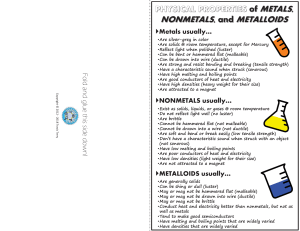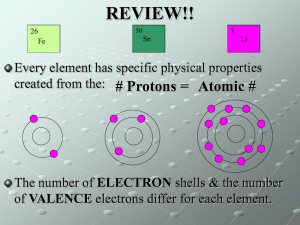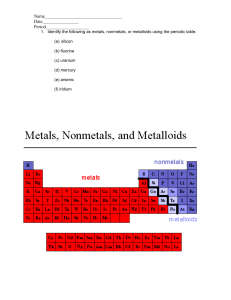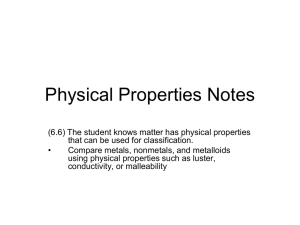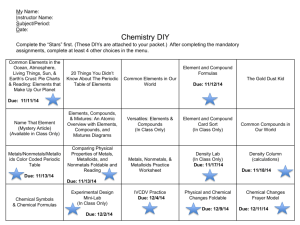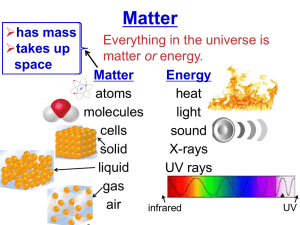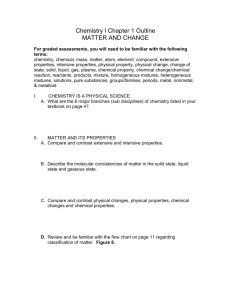Elements
advertisement
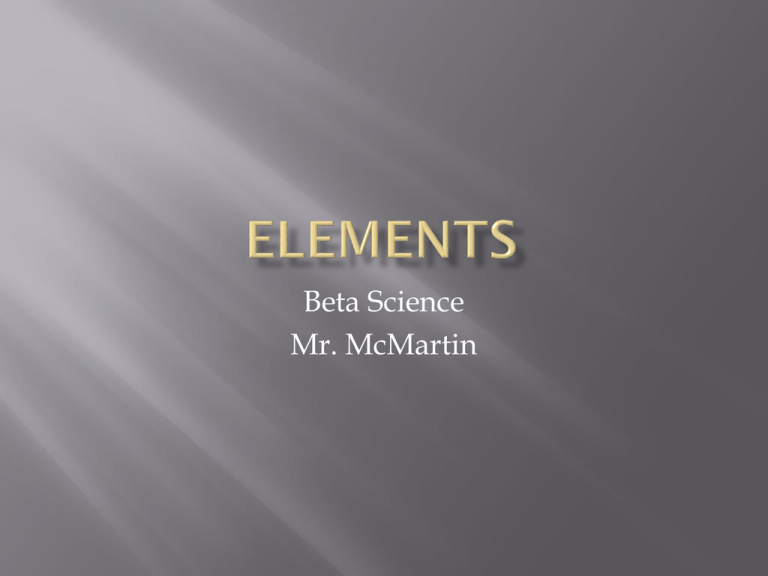
Beta Science Mr. McMartin Element: a substance that cannot be separated or broken down into simpler substances by chemical or physical means. Pure Substance: a sample of matter, either a single element or a single compound, that has definite chemical and physical properties. Metal: an element that is shiny and that conducts heat and electricity well Nonmetal: an element that conducts heat and electricity poorly. Metalloid: an element that has properties of both metals and nonmetals. Elements are “pure substances.” Each element contains only one type of atom. Ex. Every atom in a 5g nugget of the element gold is like every other atom of gold. The particles of a pure substance are alike no matter where they are found. Each element has it’s own “characteristic properties.” Characteristic properties include: Physical properties Boiling point Melting point Density Chemical properties Reactivity with acid flammability An element may share a property with another element, but other properties can help you tell the elements apart. Ex. Helium and krypton are both unreactive gases but their densities are different. Helium is less dense than air, while krypton is more dense than air. Physical Properties Color Hardness Texture Chemical properties Flammability Reactivity Elements are grouped into categories by the properties they share. There are three major categories: Metals Nonmetals Metalloids Categories are similar but they have distinct qualities. Much like music may be similar but they have categories like: pop, rock, classical etc. They are Malleable and Ductile Nonemetals are elements that are dull and that are poor conductors of heat and electric current. Nonmetal solids tend to be brittle and unmalleable. Few familiar objects are made of only nonmetals. Metalloids are also called “semiconductors.” They have properties of both metals and non metals. Some are shiny. Some are dull They are somewhat malleable and ductile. Some metalloids conduct heat and electric current well.


